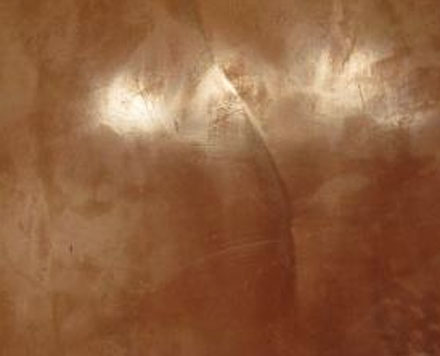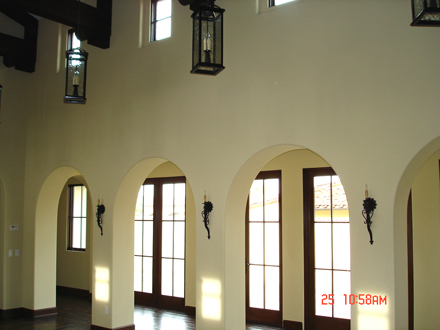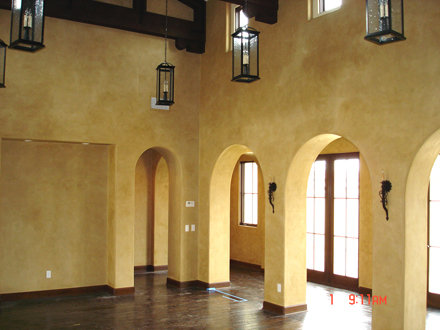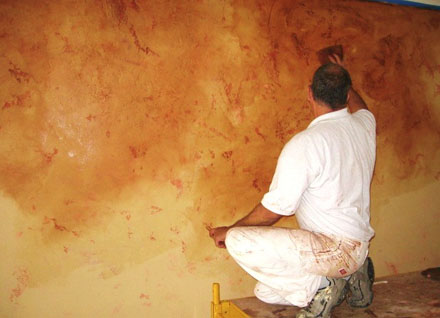Use Venetian Plaster in your Tuscan Interior Design
One of the most popular finishes used in Mediterranean interior design and Tuscan interior design is Venetian plaster. If you are designing a home and want that old fresco look, you should really consider incorporating this into the interior design of your home. Venetian plaster is a wall and ceiling finish using thin layers of plaster applied with a trowel or spatula. It is then burnished to create a smooth surface that adds a lot of depth and texture to the areas treated. There are many variations of sheen depending on the amount of burnishing that is done or the amount of wax that is used. From a matte, chalky fresco look to a very shiny and glossy appearance, you can incorporate it into old world interior design or modern interior design. There are also several different types of Venetian plaster techniques including marmorino, scagliola, and sgraffito.

Brown Venetian Plaster – Burnished
The Different Types of Venetian Plaster
Marmorino Veneziano is a plaster or stucco decoration used on walls. It was used as far back as Roman times, but was made popular once more during the Renaissance 500 years ago in Venice.
It is made from crushed marble and lime putty, which can be tinted to give a wide range of colors. This can then be applied to make many textures, from polished marble to natural stone effects. Widely used in Italy, its appeal has spread through North America especially, but now worldwide. Because of the hours of workmanship, the pricing places it in the high-end market. However, many examples can be seen in public buildings, bars, restaurants, etc.
Its waterproofing and anti-bacterial qualities as well as visual effects have also made it very desirable for luxury bathrooms and other wet areas. Not confined to interior use, it can be seen on the exterior of many buildings to great effect.
You can see from the photos above the depth and character that Venetian plaster gives to walls. Instead of being flat, Venetian plaster creates a mottled appearance giving your walls more depth and variation in color.
Scagliola (from the Italian scaglia, meaning “chips”), is a technique for producing stucco columns, sculptures, and other architectural elements that resemble inlays in marble and semi-precious stones. The Scagliola technique came into fashion in 17th-century Tuscany as an effective substitute for costly marble inlays, the pietra dura works created for the Medici family in Florence.
Scagliola is a composite substance made from selenite, glue and natural pigments, imitating marble and other hard stones. The material may be veined with colors and applied to a core, or desired pattern may be carved into a previously prepared scagliola matrix. The pattern’s indentations are then filled with the colored, plaster-like scagliola composite, and then polished with flax oil for brightness, and wax for protection. The combination of materials and technique provides a complex texture, and richness of color not available in natural veined marbles.
Installing Venetian Plaster
Below is a video that shows the techniques and different steps involved in applying Venetian plaster to your walls.
Sgraffito (plural: sgraffiti; sometimes spelt scraffito) is a technique produced by applying layers of plaster tinted in contrasting colors to a moistened surface by applying two successive layers of contrasting slip, and then in either case scratching so as to produce an outline drawing.
Italian Country Home is a subdivision of Orange County interior design firm Christopher James Interiors. We are licensed and trained professionals in the installation of Venetian plaster. If you are interested in using Venetian plaster in your home, please contact us for a free in home consultation.







